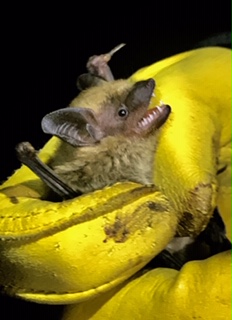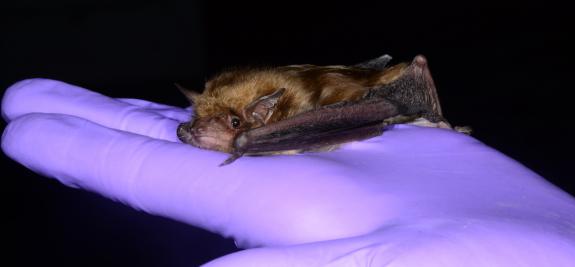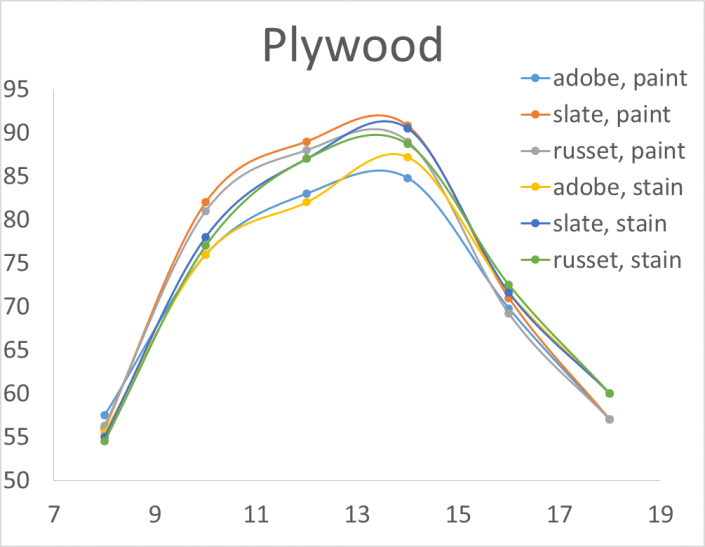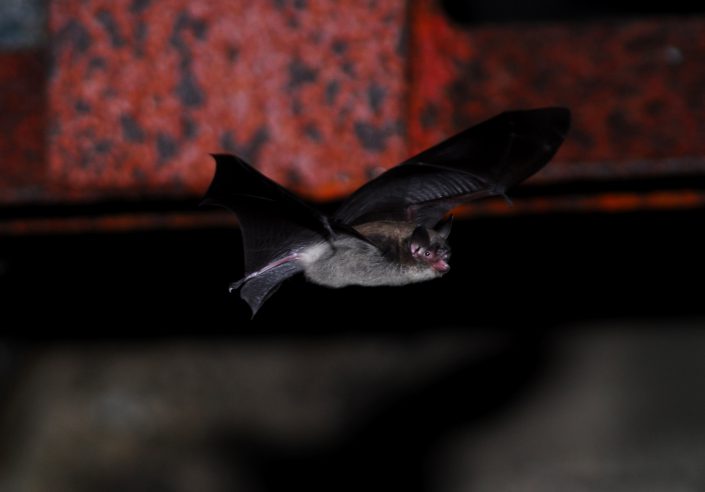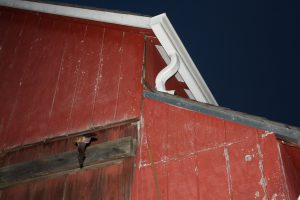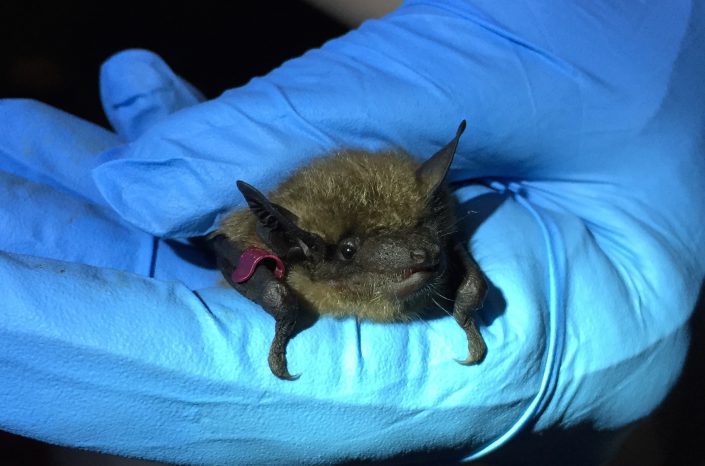Northern Long-Eared Bats found in the Pinelands
by Meaghan Lyon, Wildlife Biologist

During the past two months, Conserve Wildlife Foundation of New Jersey biologists have spent many late nights surveying for bats in the Pinelands! A typical survey night starts just before sundown with setting up expansive nets across corridors in the woods. In the dark, these fine threaded nets are nearly invisible to bats and the occasional flying squirrel or Whippoorwill. As the sun sets, the bats emerge, rushing through the sky to their foraging grounds. Every ten minutes, from sunset till 2am, the nets are checked and any captured bats are safely extracted from the nets to then be identified, weighed, and measured.
Over the course of 10 survey nights, 49 bats were captured in the nets! The Big Brown Bat (Eptesicus fuscus) was the most common bat identified with a total of 28 individuals. The Big Brown Bat is the most common species of insectivorous bat in North America, relatively large with long, silky fur, dark skin, and a wide nose. The second most common bat captured was the Eastern Red Bat (Lasiurus borealis). Like the Big Brown Bat, the Eastern Red Bat is widespread across eastern North America. It’s distinguished by the orange fur and a furred tail membrane. While surveying in the Pinelands, wildlife biologists captured 17 Eastern Red Bats!



Our goal for this surveys was not to capture a lot of bats, but to capture rare bats in the Myotis genus. On the last few survey nights, we finally achieved our goal, capturing two Little Brown Bats (Myotis lucifugus) and two Northern Long-Eared Bats (Myotis septentrionalis). The Little Brown Bat is a tiny bat weighing less than 10 grams that has glossy brown fur and long hairs on its toes. Likewise, the Northern long-eared bats are very tiny, with brown fur, and large ears.
The Little Brown Bat is a Species of Concern and the Northern Long-Eared Bat is a Federally Threatened species due to their susceptibility to White Nose Syndrome (WNS). WNS is a fungal disease that has heavily impacted bats of the Myotis family. White nose fungus grows in cold, moist environments like caves and mines – perfect habitat for many bats. This devastating disease has killed more than 6 million bats nationwide since it was first discovered in 2006.



When a Myotis bat, like the Northern Long-Eared or Little Brown, is captured, things get exciting! To learn more about where these bats roost during the day, we attach a temporary radio transmitter, smaller than the size of a fingernail, to the bat’s back and then spend the next several days tracking the radio signal in a process called radio telemetry. The transmitter on the bat’s back sends out a signal that sounds like a consistent “beep” and then the biologist holds an antenna and a receiver that is able to receive the signal. The closer you get to the bat, the louder and clearer the signal or “beeps” are! The bats are tracked through this process of radio telemetry until the roost is found.


The tagged Northern Long-Eared Bat was able to be tracked to a roost tree in a nearby swamp, roughly a mile away from the capture site. There is still lots to learn about this dwindling species and identifying roost trees is an important way to help protect this species habitat and to get a better understanding of the existing population. We also fitted one of the Little Brown Bats with a radio transmitter to track it to the roost. The roost for this bat was located approximately 2 miles away from the capture site in a residential building! Roosting in buildings is common for Little Brown Bats as it mimics the microenvironment of a cave.
Although previous years surveys resulted in higher overall numbers of bats, this was the first year for the Northern Long-Eared Bat and Little Brown Bat to be captured at this site in the Pinelands. Acoustic surveys from 2017 indicated these species were present but confirming these threatened bats are still active in the area several years later is an exciting feat!
This project was done in partnership with the United States Fish and Wildlife Service, New Jersey Field Office.

